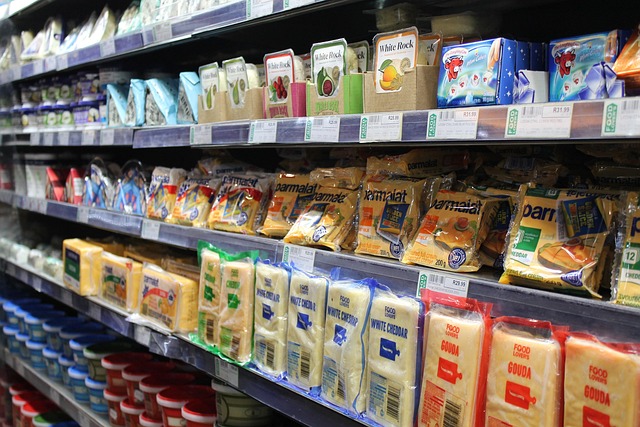When it comes to making healthier food choices, understanding nutrition labels is crucial. With so many packaged foods on the shelves, it can be overwhelming to know where to start. But don’t worry! Once you know how to read a nutrition label correctly, you’ll be able to make more informed decisions and choose foods that support your health goals.
In this blog, we’ll break down how to read nutrition labels like a pro, focusing on the essential information that will help you make healthier choices in the grocery store.
1. Start with the Serving Size
The first thing to check when reading a nutrition label is the serving size. This is often overlooked, but it’s the most important part of the label. Serving sizes can vary from product to product, so always check the amount listed before you assume what’s in the package.
-
What to look for
Serving size is listed at the top of the nutrition label, and it is the basis for all the nutritional information provided. For example, if the serving size is one cup and you eat two cups, you’ll need to double the amount of calories, fat, carbs, and other nutrients listed. -
Tip
Be mindful of portion sizes. If you tend to eat more than one serving, you’ll need to adjust the nutritional values accordingly.
2. Check the Calories
Calories give you an idea of how much energy you’ll get from a serving of the product. While calories are important, they don’t tell the whole story. It’s essential to look at the quality of the calories you’re consuming, not just the quantity.
-
What to look for
The number of calories per serving is listed on the nutrition label. If you’re trying to manage your weight or maintain a healthy lifestyle, pay attention to how many servings are in the package and how many calories you’re consuming in total. -
Tip
If you are trying to lose weight or simply stay healthy, choose foods with fewer empty calories (calories from added sugars or unhealthy fats) and focus on nutrient-dense foods.
3. Understand Macronutrients: Fat, Protein, and Carbs
The next section of the label provides information about the three primary macronutrients: fat, protein, and carbohydrates. Here’s what each of them means:
-
Fat
There are different types of fat: unsaturated fats (good fats), saturated fats (bad fats), and trans fats (the worst kind). Pay special attention to the amount of saturated and trans fats in the product, as these contribute to heart disease and other health problems.-
What to look for
-
Aim to keep your intake of saturated fat under 10% of total calories per day.
-
Avoid trans fats as much as possible.
-
-
-
Protein
Protein is essential for muscle repair, immune function, and overall body health. The amount of protein in a food will depend on whether it’s an animal or plant-based source.-
What to look for
-
Choose foods that provide a good balance of protein, especially if you’re looking to build or maintain muscle mass. For example, a chicken breast or tofu will have higher protein than a serving of chips.
-
-
-
Carbohydrates
Carbs are your body’s primary source of energy. There are simple carbs (like sugar) and complex carbs (like whole grains). Complex carbs provide more nutrients and fiber than simple sugars, which can lead to weight gain and blood sugar spikes.-
What to look for
-
Aim for products that have fiber in the carbohydrate section. Fiber is essential for digestion and helps maintain steady blood sugar levels.
-
-
4. Look at the Fiber and Sugars
Fiber and sugars are two key components of carbohydrates that deserve extra attention.
-
Fiber
Dietary fiber is a type of carbohydrate that your body cannot digest. It plays a significant role in digestive health and can help you feel fuller longer.-
What to look for
-
Choose foods with higher fiber content (aim for 25-30 grams of fiber per day) to support healthy digestion, prevent constipation, and maintain stable blood sugar levels.
-
-
-
Sugars
Sugars can either be naturally occurring (like those in fruits and dairy) or added sugars (like those in processed foods). Added sugars can contribute to weight gain, inflammation, and other health issues, so it’s important to monitor your intake.-
What to look for
-
Avoid products with high amounts of added sugars. Check for the term “added sugars” under the total sugars listed. Ideally, try to keep added sugars to less than 10% of your total daily caloric intake.
-
-
5. Pay Attention to the Ingredients List
The ingredients list is often overlooked, but it’s one of the most important parts of the nutrition label. It tells you exactly what’s inside the product and in what order. Ingredients are listed by quantity, with the most abundant ingredient appearing first.
-
What to look for
-
Whole foods like fruits, vegetables, whole grains, and lean proteins should be at the top of the list.
-
Avoid products with a long list of artificial ingredients, chemicals, or preservatives.
-
If sugar or high-fructose corn syrup is listed near the top, the product is likely highly processed and not the healthiest option.
-
-
Tip
Always try to choose products that list whole, recognizable ingredients, and avoid items with a long list of additives or highly processed ingredients.
6. Check for Micronutrients (Vitamins and Minerals)
Micronutrients are the vitamins and minerals your body needs in smaller amounts but are crucial for good health. Many nutrition labels provide information about key micronutrients like vitamin A, vitamin C, calcium, and iron.
-
What to look for
-
Look for products that are high in essential vitamins and minerals, especially those that are commonly lacking in the average diet, like vitamin D, calcium, and iron.
-
-
Tip
While the percentage of daily value for vitamins and minerals can be useful, the most nutrient-dense foods typically come from whole food sources, not processed packages. So, focus on getting the bulk of your vitamins and minerals from fruits, vegetables, whole grains, and lean proteins.
7. Understand the % Daily Value (DV)
The % Daily Value (%DV) on a nutrition label shows how much a nutrient in a serving of food contributes to a daily diet, based on a 2,000-calorie daily intake. This can help you understand if a food is high or low in a specific nutrient.
-
What to look for
-
5% DV or less is considered low for that nutrient.
-
20% DV or more is considered high for that nutrient.
Use the %DV to evaluate whether a food is a good source of the nutrients you need or if you should limit certain nutrients like sodium or added sugars.
-
Becoming a Pro at Reading Nutrition Labels
Learning how to read nutrition labels like a pro can empower you to make healthier food choices, whether you’re trying to lose weight, manage a health condition, or simply live a healthier lifestyle. By understanding the serving size, calories, macronutrients, micronutrients, and ingredients list, you can confidently navigate the grocery store and make choices that support your health goals.
Remember, nutrition labels are there to help you, so don’t be afraid to take the time to read them thoroughly. By mastering this skill, you’ll be better equipped to make informed decisions that benefit both your body and mind.


